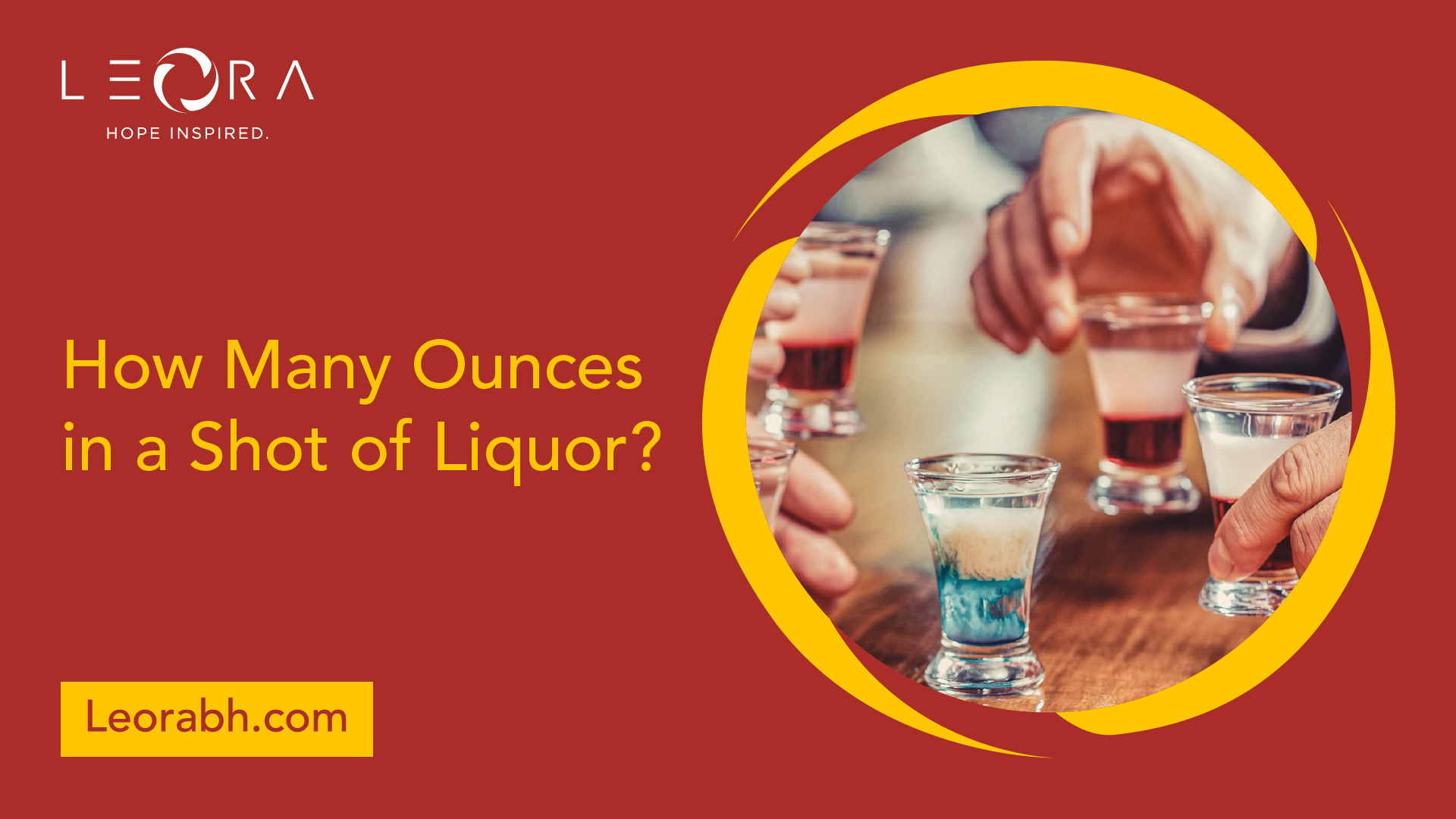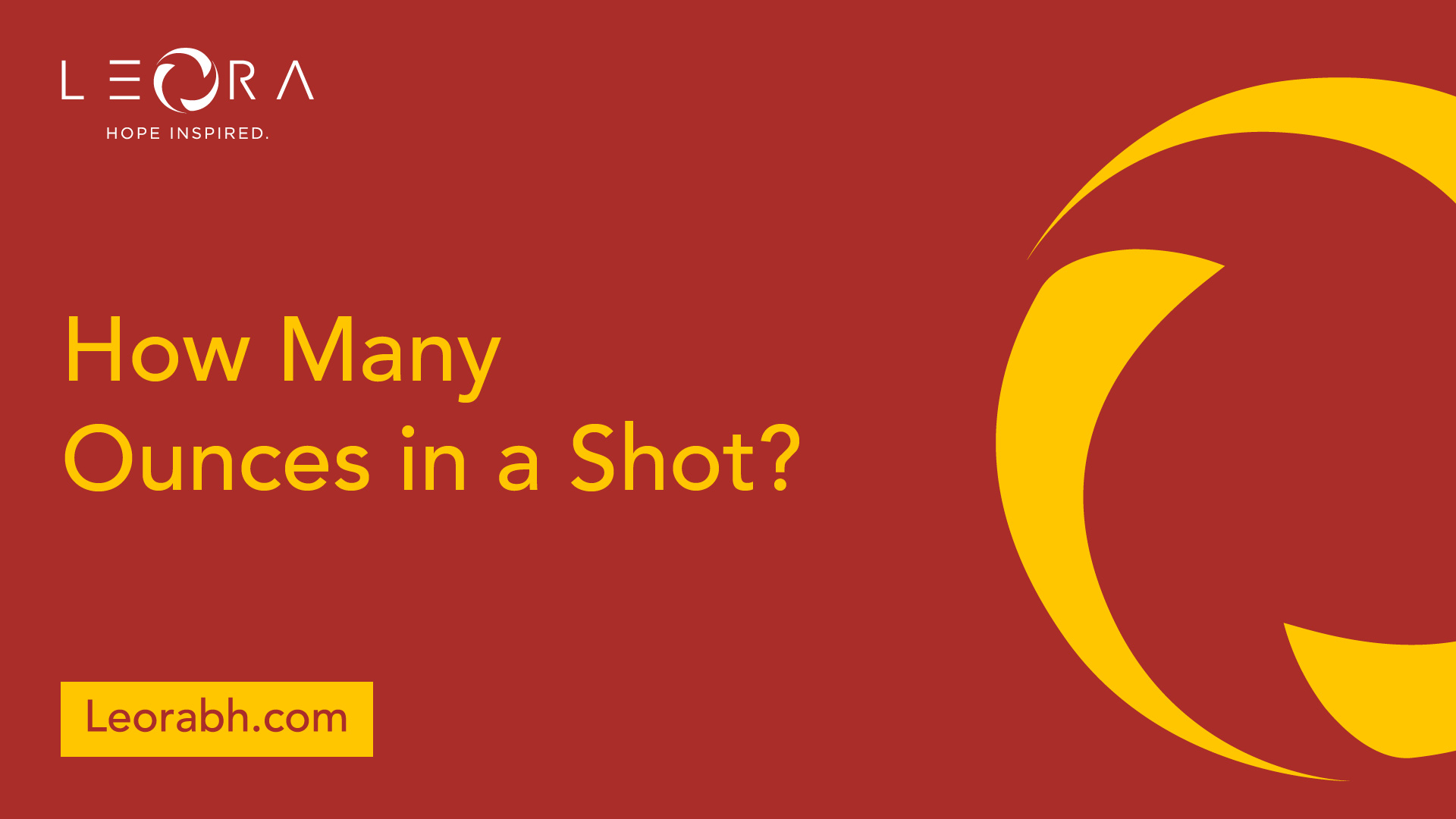How Many Ounces in a Shot of Liquor?
Discover the ounces in a shot of liquor! Uncover the truth behind standard drink sizes and shot glass diversity.
Understanding Alcohol Measurements
When it comes to understanding alcohol measurements, two important concepts to consider are the definition of a standard drink and the sizes of shot glasses.
Standard Drink Definition
In the United States, a "standard" drink, or one alcoholic drink equivalent, contains approximately 14 grams of pure alcohol. This amount is typically found in beverages containing 0.6 fluid ounces (14 grams) of pure alcohol. It's important to note that the alcohol content can vary depending on the type of beverage consumed.

Shot Glass Sizes
Shot glasses are commonly used to measure and serve spirits. While shot glasses can come in various sizes, they typically have capacities of either 52 ml (1.75 oz) or 60 ml (2 oz). These sizes allow for the standard measure of a shot plus a little extra for comfortable handling of the liquid [2].
However, it's important to note that shot glasses can vary in size, and they are often not labeled, which can impact the actual amount of alcohol consumed. Most shot glasses hold around 1.25 to 1.5 ounces of liquor, but it's not uncommon to find shot glasses that are less than an ounce or over 3 ounces. The most common size for a shot glass is 1.5 ounces [3].
It's worth mentioning that shot glass sizes can also vary by region. For example, in Utah, there is a strict definition of a shot, with bartenders taught to pour them consistently at 1.5 ounces. In Australia, the average shot ranges from 1 to 2 ounces, while in Germany, a shot is usually between 0.5 to 1.5 ounces.
Understanding the sizes of shot glasses is essential for responsible drinking, as it helps individuals track and monitor their alcohol consumption. It's important to be aware of the sizes of shot glasses being used and to consider the varying definitions when consuming alcoholic beverages.
How Many Ounces in a Shot?
If you've ever wondered about the standard measurement for a shot of liquor, you're not alone. The volume of a shot can vary depending on where you are in the world. In this section, we will explore the US standard shot size and the variations found in other countries.

US Standard Shot Size
In the United States, a standard shot typically contains 1.5 fluid ounces (44 ml) of liquor. This amount is equivalent to approximately 1.5 ounces (14 grams) of pure alcohol. It is important to note that shot glasses themselves can vary in size, but the standard shot measurement remains consistent across most establishments. Shot glasses commonly have capacities of 1.75 ounces (52 ml) or 2 ounces (60 ml), allowing for the standard measure of a shot plus a little extra for comfortable handling of the liquid.
International Shot Variations
Outside of the United States, shot sizes can differ significantly. For example, in Australia, the average shot ranges from 1 to 2 ounces, while in Germany, a shot is usually between 0.5 to 1.5 ounces [4]. It's important to be aware of these variations when ordering shots abroad or when consuming alcoholic beverages in different cultural settings.
Understanding the standard shot size is crucial for responsible alcohol consumption. It helps individuals gauge their intake and maintain awareness of the alcohol content in their drinks. However, it's worth noting that shot glasses are often not labeled, which can impact the actual amount of alcohol consumed. To ensure accuracy, it is recommended to use a measuring device or consult a bartender who adheres to consistent pouring practices.
Understanding the variations in shot sizes can help individuals make informed decisions and consume alcohol responsibly. By being aware of the standard shot size in your region and the potential differences when traveling, you can better manage your alcohol intake and make choices that align with your personal well-being.
Implications of Varying Shot Sizes
When it comes to the size of a shot of liquor, there can be significant variations. These discrepancies can have implications both in terms of pouring accuracy and alcohol consumption.
Pouring Discrepancies
Shot glasses typically have capacities ranging from 1 to 1.5 to 2 ounces, and they are often not labeled, making it difficult to precisely measure the amount of alcohol being poured. This lack of standardized shot glass sizes can lead to inconsistent pouring practices and variations in the actual amount of alcohol consumed. It's important to be aware of these discrepancies, as they can impact the accuracy of drink recipes and potentially affect the intended alcohol content of a beverage.
To ensure consistent pouring, some establishments and regions have implemented regulations and standards. For example, Utah is the only state in the United States with a strict definition of a shot, teaching bartenders to pour them consistently at 1.5 ounces. In other countries like Australia, shots can range from 1 to 2 ounces, while in Germany, a shot typically ranges from 0.5 to 1.5 ounces [4].
Effects on Alcohol Consumption
The varying sizes of shots can also have implications for alcohol consumption. A shot glass typically holds around 1.25 to 1.5 ounces of liquor, but this can vary depending on the specific shot glass used. It's essential to be mindful of the size of the shot glass to accurately gauge the amount of alcohol being consumed.
In situations where larger shot glasses are used, individuals may unknowingly consume more alcohol than they intended. Conversely, smaller shot glasses may lead to underestimating the amount of alcohol consumed. These variations can have an impact on blood alcohol concentration (BAC) levels and overall alcohol consumption.
To ensure responsible drinking, it's important to be aware of the shot glass size and understand the relationship between alcohol consumption and its effects on the body. If you have concerns about alcohol consumption or are seeking support, it's always advisable to consult with a healthcare professional or seek assistance from organizations that specialize in addiction recovery. For more information on the harmful effects of alcohol and available resources, you can visit our article on why AA is harmful?.
Understanding the implications of varying shot sizes can help individuals make informed decisions about their alcohol consumption and promote responsible drinking practices.
Alcohol Content in Mixed Drinks
When it comes to assessing the alcohol content in mixed drinks, it's important to consider the influence of bartenders and the potential for exceeding standard drink limits.

Influence of Bartenders
The amount of alcohol in a drink can be influenced by the person pouring it, such as bartenders, as some may pour more than a standard drink. This variability can make it challenging to determine the exact alcohol content in a drink [3]. It's crucial to be aware that the alcohol content may vary depending on the establishment and the individual serving the drink.
Exceeding Standard Drink Limits
Many mixed drinks contain more than a single shot of liquor, significantly increasing the alcohol content above that of a standard drink. For example, a Long Island Iced Tea contains half an ounce of five different types of liquor, while a chocolate martini includes almost four ounces of liquor per drink [3]. These variations highlight the importance of understanding the specific ingredients and measurements in mixed drinks to accurately gauge their alcohol content.
Depending on the recipe, the amount of liquid in a glass or bottle may not equate to the actual amount of alcohol in the drink. Some cocktails can contain one, two, or more standard-sized drinks in a single serving. Being mindful of the alcohol content in mixed drinks is crucial to drinking responsibly and staying within safe limits.
To make informed decisions about alcohol consumption, it's essential to be aware of the potential variability in alcohol content, particularly in mixed drinks. Being aware of these factors can help you monitor your alcohol intake and make responsible choices. If you have any concerns about alcohol consumption or need guidance, it is recommended to seek advice from a healthcare professional or reach out to support groups like Alcoholics Anonymous. Remember, it's important to drink responsibly and be aware of potential interactions with medications, such as antibiotics.
Shot Glass Diversity
When it comes to measuring shots of liquor, shot glasses play a crucial role. Shot glasses are available in various sizes, each with its own capacity and purpose. In this section, we will explore the common shot glass sizes and the distinction between official and unofficial standards.
Common Shot Glass Sizes
Shot glasses typically have capacities of 52 ml (1.75 oz) or 60 ml (2 oz) to accommodate the standard measure of a shot plus a little extra for comfortable handling of the liquid. However, it's important to note that shot glasses can vary in size from 1 to 1.5 to 2 ounces, and they are often not labeled, which can impact the actual amount of alcohol consumed.
The most common size for a shot glass is around 1.5 ounces. However, shot glasses can be found in various sizes, ranging from less than an ounce to over 3 ounces. It's crucial to be aware of the size of the shot glass you are using to accurately measure the amount of liquor being consumed [4].
To provide a clearer understanding, here is a table showcasing the different shot glass sizes commonly encountered:
Shot Glass Size Capacity
- Standard Shot: 1.5 ounces
- Small Shot: Less than 1 ounce
- Large Shot: Over 3 ounces
Figures courtesy Webstaurant Store
Official vs. Unofficial Standards
Unlike other measurements in the culinary world, there is no universally recognized official standard for shot glass sizes. Each country or region may have its own conventions and practices. For example, in Utah, there is a strict definition of a shot, with bartenders taught to consistently pour shots at 1.5 ounces. On the other hand, shot sizes in Australia can range from 1 to 2 ounces, while in Germany, shots are usually between 0.5 to 1.5 ounces.
Due to the lack of a standardized shot size, it's important to be mindful of the size of the shot glass being used and the potential variation in pour sizes. This variation can lead to discrepancies in the actual amount of alcohol consumed.
To ensure accuracy, it's advisable to use measuring tools such as jiggers or measuring cups specifically designed for liquor. These tools provide more precise measurements and help maintain consistency in drink recipes.
Understanding the diversity of shot glass sizes and the absence of an official standard can help individuals make informed decisions regarding their alcohol consumption. By being aware of the variations in shot sizes, one can better navigate the implications of different pour sizes and make responsible choices when it comes to enjoying alcoholic beverages.
Practical Measurements
When it comes to measuring shots of liquor, it's helpful to understand practical equivalents that can make mixing drinks and following recipes easier. This section will cover equivalents in tablespoons and provide guidance on checking shot glass capacity.
For more information on alcohol-related topics, you may find our articles on why aa is harmful?, can you drink alcohol with antibiotics?, and how long after drinking can i take tylenol.
Equivalents in Tablespoons
If you're operating under the common measurement where a standard shot is considered to be 1.5 ounces, it can be helpful to know the equivalent measurement in tablespoons. A 1.5-ounce shot is equal to 3 tablespoons, or 9 teaspoons. This conversion can be useful when following recipes that specify measurements in tablespoons rather than ounces. It allows for accurate and consistent measurements, ensuring that your mixed drinks turn out just right.
Checking Shot Glass Capacity
Shot glasses are commonly used to measure and serve shots of liquor. However, it's important to note that shot glass sizes may vary, with glasses holding anywhere from 28 mL to around 90 mL, depending on whether it's a single shot, double shot, or shooter [4]. To ensure accurate measurements, it's crucial to check the capacity of your shot glass before using it to serve shots.
If you're using shot glasses with known capacities, such as 1.5 ounces (44 mL), it's relatively straightforward to measure the desired amount. However, if you're using shot glasses of varying sizes, it's helpful to have a clear understanding of their capacities. This allows you to adjust your pour accordingly and maintain consistency in your beverage preparations.
By being aware of the size and capacity of the shot glasses you're using, you can ensure that you're pouring accurate shots and achieving the desired taste and strength in your drinks. Remember, shot glasses can differ, so always double-check their measurements before relying on them as a consistent measuring tool.
Understanding practical measurements in tablespoons and verifying shot glass capacities are valuable skills for anyone mixing drinks or following recipes involving shots of liquor. By being knowledgeable about these measurements, you can confidently create delicious cocktails and accurately measure the amount of liquor needed for your favorite libations.
References
Find Your Inner Light
Related Articles
Contact Us
Leora Behavioral Health offers a comprehensive addiction treatment programs to help you get your life back on track.
Our trained professionals will work with you to develop a personalized treatment plan that meets your unique needs. If you or someone you know is struggling with addiction, reach out to Leora Behavioral Health today.


.svg)





.svg)
.svg)
.svg)
.svg)